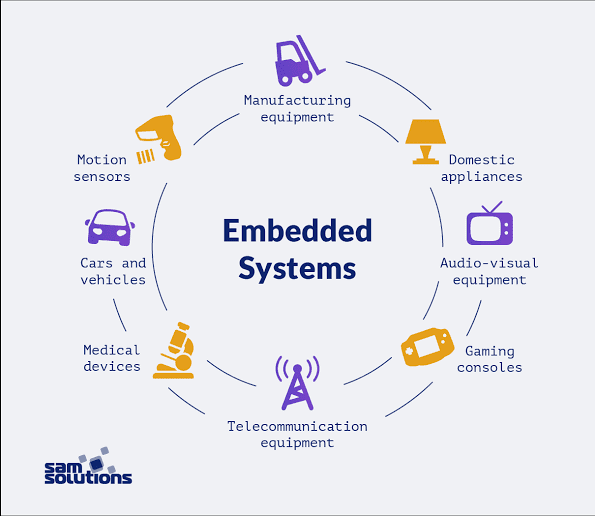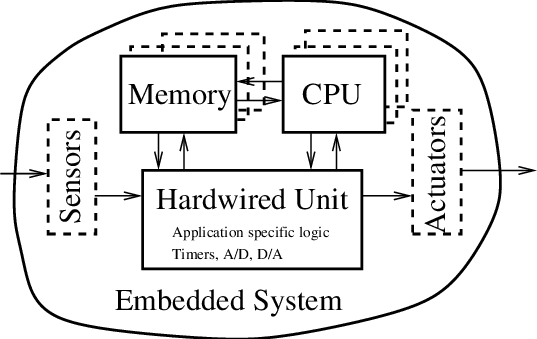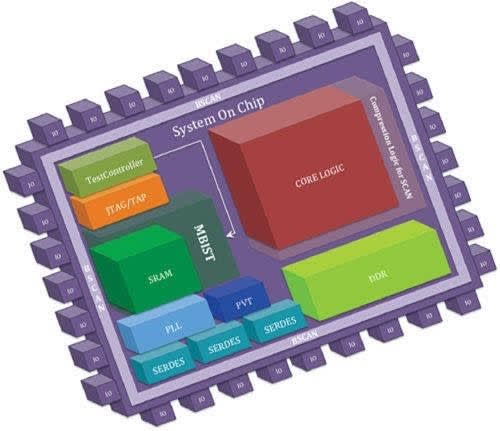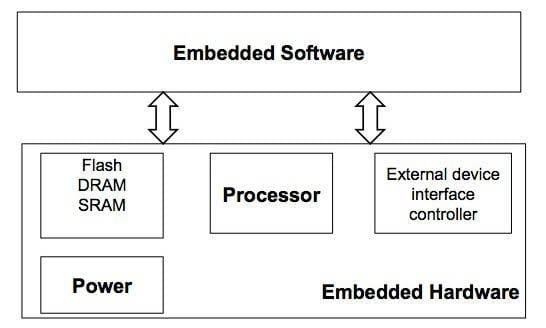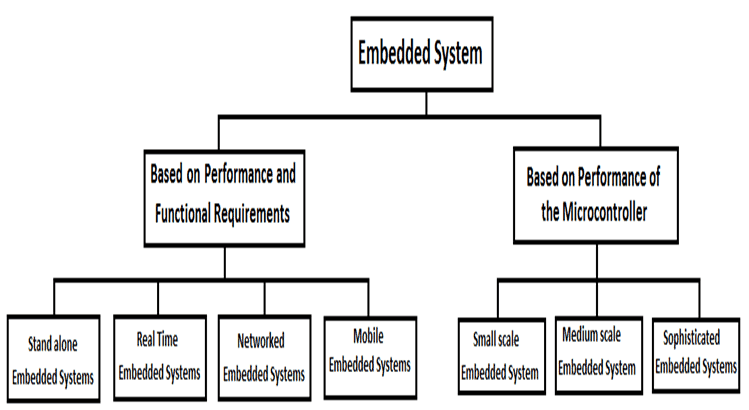What is an embedded systems?
Follow articleHow do you feel about this article? Help us to provide better content for you.
Thank you! Your feedback has been received.
There was a problem submitting your feedback, please try again later.
What do you think of this article?
What is an Embedded System?
We live in a world stuffed with embedded systems. In fact, much of our technology is based on them. That digital watch on your wrist, the microwave that you use for heating food, and the car that you drive every day — each of these is an embedded system. But before diving deep into the sea of embedded systems, let's first define what an embedded system is.
Definition of embedded system
An embedded system can be defined as an isolated system, designed to perform a designated function with the help of its hardware and embedded software.
In simple terms, an embedded system is a bit like a special-purpose computer that has been built into a device that is not generally considered to be a computer.
They are named 'embedded' systems because they always function as part of a complete device.
Embedded systems were first developed in the latter half of the 20th century.
- The earliest knownembedded system is the Apollo guidance computer. This was developed in 1960 by Dr Charles Stark for the Apollo Program.
- The first commercially introduced embedded system or microprocessor unit was the Intel 4004, released in 1971.
Components of an embedded system
To understand how everything fits together in an embedded system, it is useful to have a look at each of the components involved. The following are some of the absolute components used in embedded systems.
Hardware
The hardware is comprised of the mechanical or electronic parts required to form a complete circuit. The hardware of an embedded system is made up in large part of microcontrollers and microprocessors.
There are many options available when it comes to selecting hardware, according to different systems' requirements. Some examples are listed below.
Microcontroller or Microprocessor
- These form the coreof an embedded system.
- A microcontroller and a microprocessor are smart efficient devices that store the programming code within their memory.
- The program stored in the memory executes the tasks for which the embedded system is designated.
- Microcontrollers usually come in 6-bit, 8-bit, 16-bit or 32-bit sizes.
System on a Chip (SoC)
- A system on a chip is an integrated circuit that houses a whole electronic or computer system on a single platform. It is a single chip that contains a processor, timers, counters, and an interactive interface along with the other main circuits that regulate the power supply.
Memory
- Memory stores information and instructions so that they can be accessed later. The most common forms of memory in an embedded system are static random access memory (SRAM) and dynamic random access memory (DRAM).
Input devices
- Devices such as sensors, actuators, diodes and switches collect data from the outside environment and process them.
- For example, sensor nodeson the wireless network system collect data about the constant change in the surrounding physical environment.
- Examples of this include the mouse and keyboard of a computer, which receive input and perform accordingly.
Output devices
- Output devices help in the display of results after processing the input with the microcontroller.
- Output devices can be LED displays, buzzers, relays and touch screens, among other things.
Embedded software
- A system doesn't work without a set of instructions to run it. For task execution, it is necessary to write the program into a programming language such as C or C++.
- There is a complex process involved in writing the application software for an embedded system. Tools such as text editors, compilers, linkers and debuggers help with this.
- All the above-mentioned tools are available in integrated development environment (IDE) systems, such as Matlab, Pycharm, QT Creator and Eclipse. IDEs are applications within which other applications can be designed. Developers can access these to find key tools.
Types of embedded systems
Now that you know the basic components of an embedded system, let's investigate the specific types of embedded systems.
Embedded systems are classified on two bases: the performance of the microcontroller and the functional requirements of the system.
There are three types of embedded system if you look at them based on their microcontrollers:
- Small-scale embedded systems, using 8- or 16-bit microcontrollers such as a digital pedometer.
- Medium-scale embedded systems, using one or more 16- or 32-bit microcontrollers. An ATM might be one of these.
- Sophisticated embedded systems, which are highly advanced, boasting multiple 32- or 62-bit microcontrollers. Examples include MRI machines and safety-critical systems.
If you're considering embedded systems on the basis of their functional requirements instead, this is how you'd classify them:
- Standalone embedded system:this works on its own, having all the necessary components within it. Your common-or-garden washing machine is one example.
- Real-time embedded system:this prioritises rapidity of response in circumstances requiring precision. Think air-traffic control and any form of transport that's semi-automated or more.
- Networked embedded system: this is an embedded system connected to a central hub that controls electronic devices with the help of LAN, WAN or the internet.
- Mobile embedded system: this is an embedded system in modern-day mobile phones and other digital devices of this niche.
Example of a basic embedded system - A health band
We live in an era of technology in which human beings want to keep a track of almost everything! Some examples of devices with embedded systems that we use to do this include desktop time-trackers that record the time that you have spent working and health bands that track your sleep habits.
Health bands and trackers are particular favourites at present, with fitness and health-tracking devices having experienced a boom over the last decade.
Have you ever thought about how a simple band that you wear around your wrist can track your footsteps, sleep schedule, heart rate and activity level? The answer is simple. These health bands are simple isolated embedded systems in system-on-a-chip (SoC) form. They have sensors that detect activity such as walking and running, plus an LED to display an output. The whole system has its own embedded software, microcontroller and memory.
You can even synchronize these bands with an app on your phone to make it a networked embedded system.
This is one of my favourite applications of embedded systems, only surpassed by a fully automated washing machine. If you haven't tried a health band, you're missing out. This is a great example of an embedded system that can help you to change your habits and sedentary lifestyle for the better.
Other examples of devices with embedded systems
Embedded systems are everywhere. Do you have burning questions about which commonplace household items around your home use embedded systems? Let's take a closer look.
Is a mobile phone an embedded system?
This is a question that has been hotly debated by embedded systems experts. The answer largely depends on the definition of an embedded system that is being used.
Because a modern-day smartphone functions much like a mini-computer, allowing users to install apps that have not been put in place by the manufacturer, not everyone considers one to be an embedded system.
It was much more clear-cut to argue that older mobile phones which did not function in this way were embedded systems.
However, when thinking in terms of classifying types of embedded system by function - standalone systems, real-time systems, network systems, and mobile systems, as discussed above - then you would generally consider a mobile phone to be a type of mobile embedded system.
Mobile embedded systems typically have limited memory but come with the advantage of increased portability.
Is a laptop an embedded system?
No, a laptop is not an embedded system. This is because an embedded system is typically contained in a larger electronic or mechanical system - whereas a laptop is a computer in its own right.
Does a microwave use an embedded system?
There are two operating systems within a microwave. The first is the electrical operating system that enables it to heat up the food. The second is the computer operating system that translates directions from the controls across to the electrical operating system.
The latter is the embedded system. A microwave is programmed so that the user can select how long they want the microwave to spend heating the food, can get the clock to display the time of day, and can start and stop the heating process at will.
How does a camera use an embedded system?
A modern-day digital camera utilises a sophisticated embedded system to capture images as well as to store and present them in the form of digital data.
Using their own actuators, processor and sensors makes them the perfect example of a mobile embedded system.


